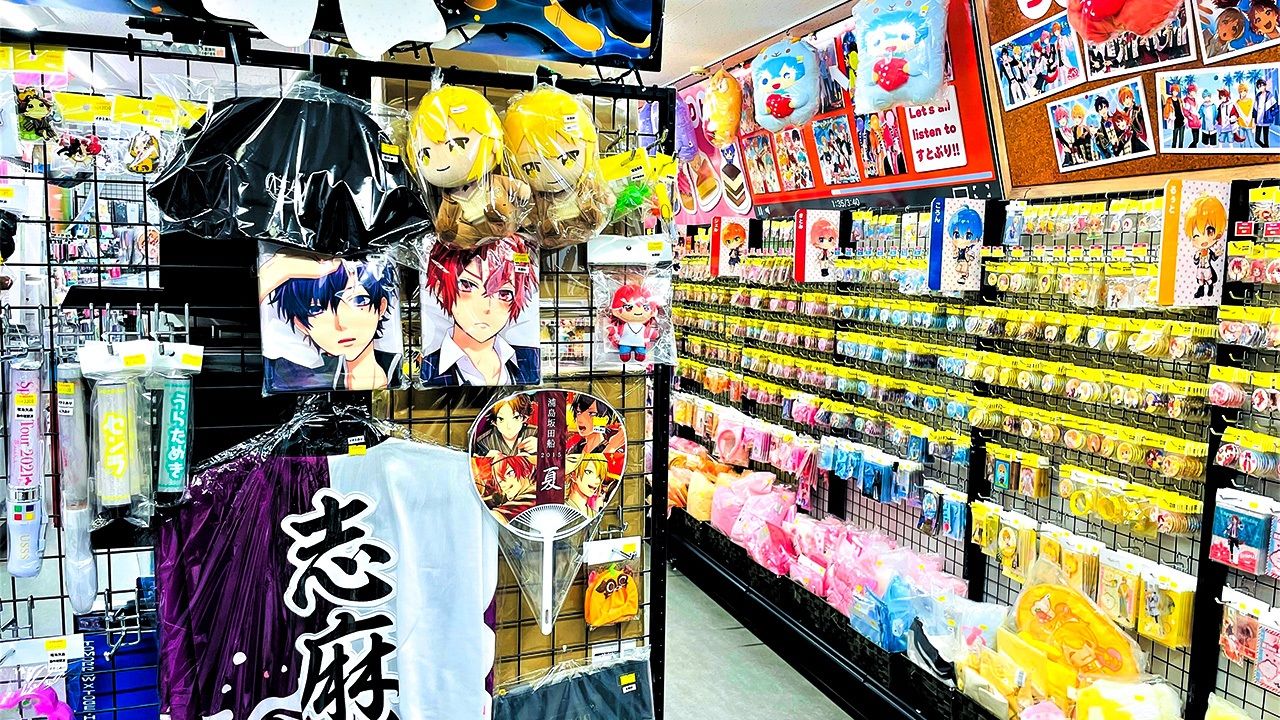
Otome Road: A Mecca for Female Otaku in Ikebukuro
Culture Manga Anime Guide to Japan Society- English
- 日本語
- 简体字
- 繁體字
- Français
- Español
- العربية
- Русский
Anime Paradise
On a Sunday afternoon in June of this year, young women pulling roller luggage behind them emerge one after another from the east gate of Ikebukuro Station and make a bee line for nearby Sunshine City. Their bags are either stuffed with cosplay costumes or empty in anticipation of shopping expeditions to the numerous specialty shops in the area.
Five minutes from the railway station, a sky blue sign advertises the main branch of Animate, a nationally known specialty shop for anime and manga items. With nine floors above ground and two more below along with a theater and a cafe, it is the largest retailer of anime-related goods in the world.
Animate currently boasts approximately 120 stores throughout Japan, but its Ikebukuro branch was the first. Built in 1983, it stands in an area of Ikebukuro known today as Otome Rōdo (Maiden Road) for its association with female anime fans. Its opening coincided with the television broadcast of two influential animated series, Captain Tsubasa and Magical Angel Creamy Mami, and the shop gradually expanded as anime surged in popularity. It relocated to its present site in 2012 and marked its fortieth anniversary this year with a grand reopening ceremony following the completion of major renovations.
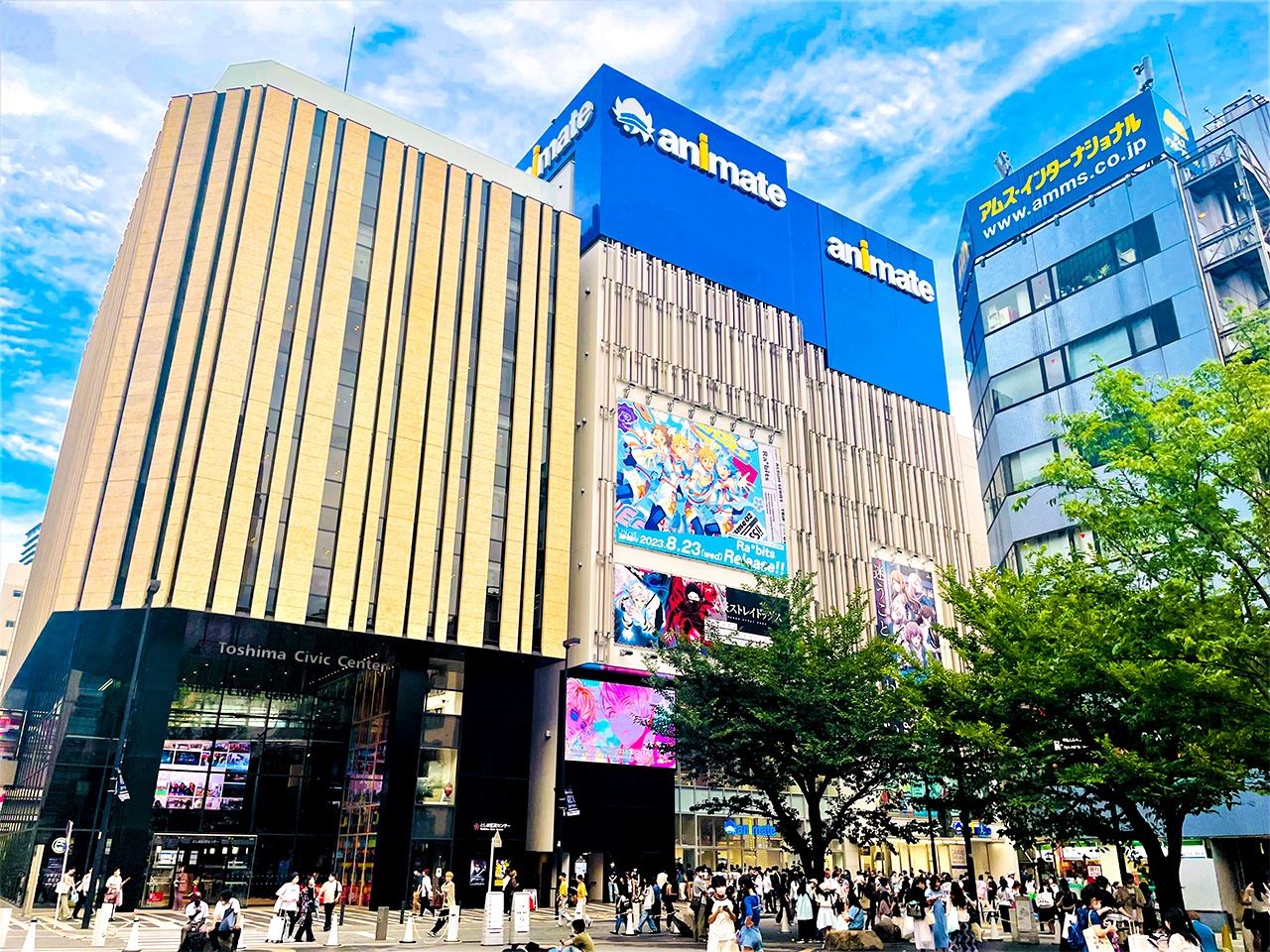
Recently renovated Animate Ikebukuro. Many customers cannot wait until they get home, choosing instead to open their purchases in Nakaikebukuro Park, seen here in the foreground. (© Hanioka Yuri)
Animate sets in a part of Ikebukuro that is home to a number of cultural facilities, including the Toshima Civic Center, which stands adjacent to the shop. In 2020, Hareza, a building housing eight theaters where kabuki, Takarazuka revues, films, and other public performances can be viewed, opened. The facility is part of an urban planning project to turn the area into an international art and culture center that is being carried out through a partnership between public and private entities. The renovations to Animate were part of the project.
On any given day the area is thronged with women of all ages dressed in colorful wigs and cosplay outfits and carrying “ita-bags,” handbags thickly decorated with buttons and badges of their favorite anime characters. Nakaikebukuro Park, which was once a hangout for barkers trying to attract customers to less-than-reputable shops in the area, has now become a gathering place for manga and anime otaku to proudly show off their latest purchases. The area has so radically transformed over the last 20 years that many jokingly talk about otaku having cleaned up Ikebukuro.
Each floor of Animate Ikebukuro is dedicated to different types of products, ranging from audiovisual items like CDs and DVDs to character goods to manga. The last of these, located on the third floor, is one of the most popular sections among female customers as nearly four-fifths of the floor space is taken up by “boys’ love” comics and novels, a genre whose storylines revolving around male homosexual relationships are aimed at female readership.
These BL genre is typically relegated to secluded corners in general-purpose bookstores, but works are openly displayed at Animate, enabling customers to peruse titles without feeling self-conscious.
According to a friend, a self-described kifujin (a woman over 30 who enjoys boys’ love comics), BL has become more “multi-cultural” over the last few years. Without a doubt, overseas works have become increasingly popular in Japan, as illustrated by the boost in demand for items like fan books for the Thai drama 2gether and photo books and anime versions of the Chinese novel Mo Dao Zu Shi (Grandmaster of Demonic Cultivation: Mo Dao Zu Shi). The “BL fever” that first began as a surreptitious pleasure among Japanese women has now become a full-blown entertainment juggernaut throughout Asia.
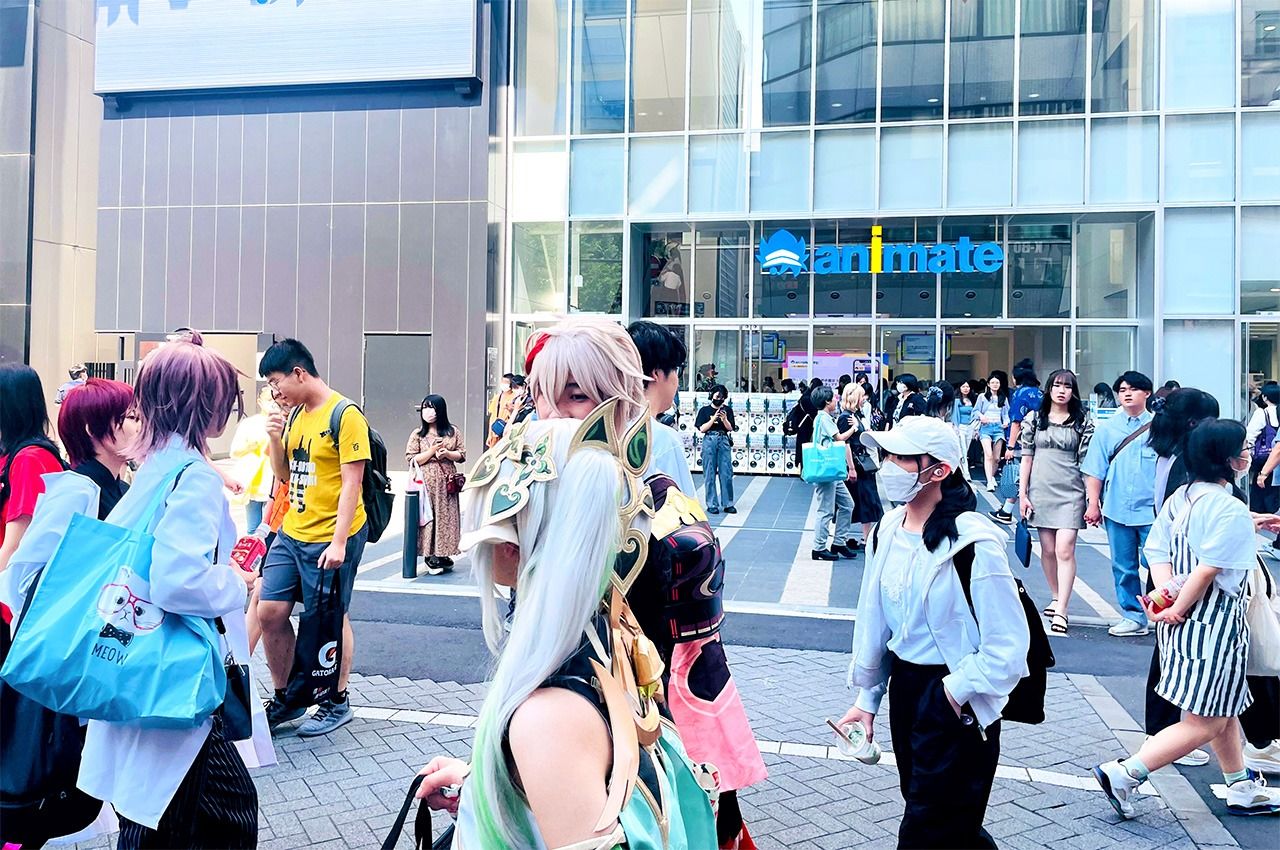
Cosplayers blend in with the crowds outside Animate Ikebukuro. (© Hanioka Yuri)
Nuikatsu
Otaku for a long time existed on the fringes of society. They mostly kept to themselves and moved within their own circles and distinct culture, even developing their own lingo to describe their interests–BL fans under the age of 30, for instance, identify themselves by the self-deprecating term fujoshi (literally “rotten girls”). Otaku have since gained broader acceptance in society and now openly take pride in the fact that they are fans of anime characters and other pop culture icons.
Like-minded otaku began gathering in areas of the city with theaters and live performance venues, and today it is common in such places to see fans displaying plush doll versions of their favorite character, idol, or actor, something known among otaku as nuikatsu. Women doing nuikatsu, so-called nuimama (nui mothers), are known for taking photos with their dolls, which they refer to as their “children,” and posting these on social media to create a record of the different places they have visited.
Many otaku enjoy amusing scenes of others snuggling up with their dolls as if out on a date. Tapping into the trend, cultural facilities and other venues have started welcoming visitors to nui-dori events, photo shoots with plush dolls. Clothing and decorative goods designed for dolls are available at discount ¥100 shops, illustrating the burgeoning market for nuikatsu as it becomes more mainstream.
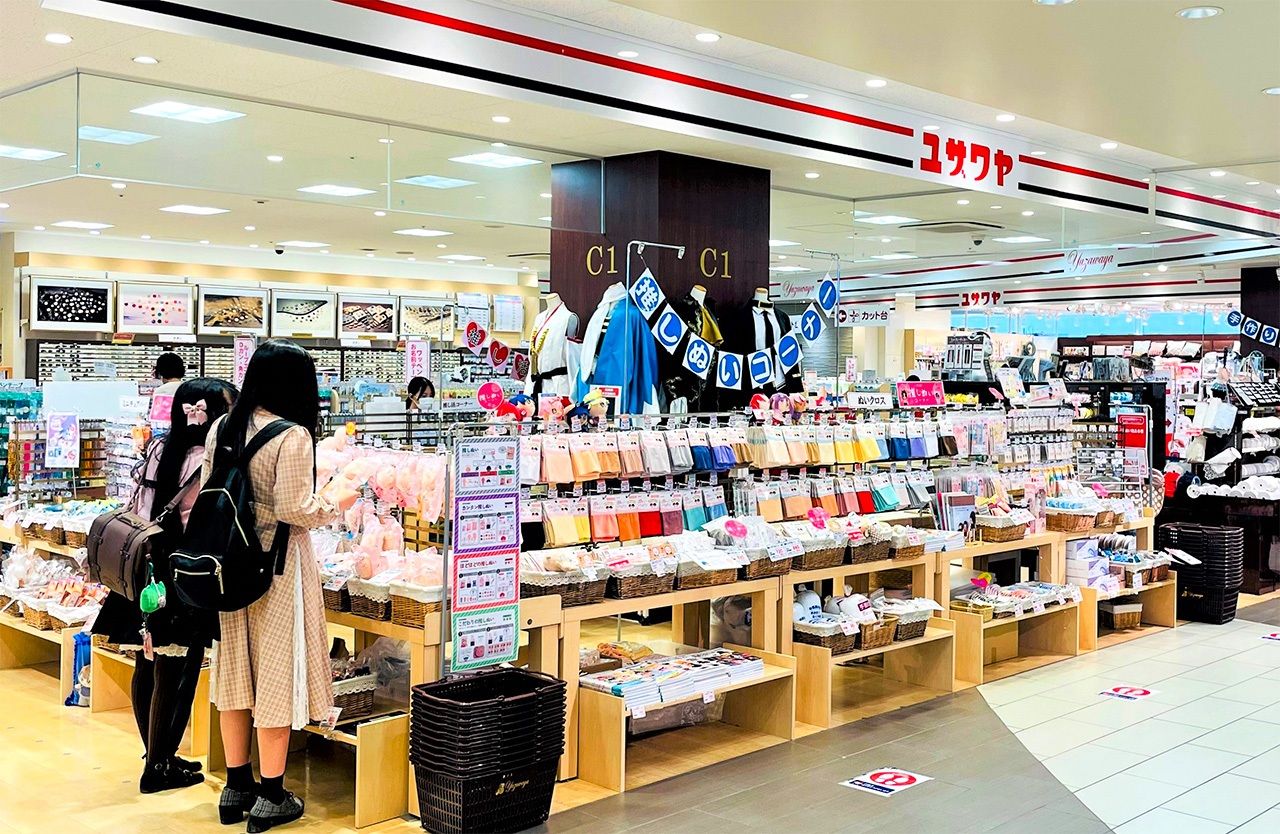
The plush doll section at the craft and hobby store Yuzawaya inside Ikebukuro’s Wacca shopping complex. A wide selection of cloth for costumes allows fans to faithfully recreate the look of their favorite characters. (© Hanioka Yuri)
Hearing that the craft and hobby store Yuzuwaya was the place to go for nuikatsu in Ikebukuro, I headed to Wacca, a commercial building located diagonally across the street from Animate Ikebukuro. On the third floor near the escalator was a sign advertising “Fan Favorite Plush Dolls.” There I found a wide variety of items on sale—colorful bolts of fabric known as nui cloth for making costumes and plush dolls, plastic eyes and other facial features, and books on sewing and handicraft techniques. Everything necessary for otaku to turn their love of their chosen character into a physical object was on offer.
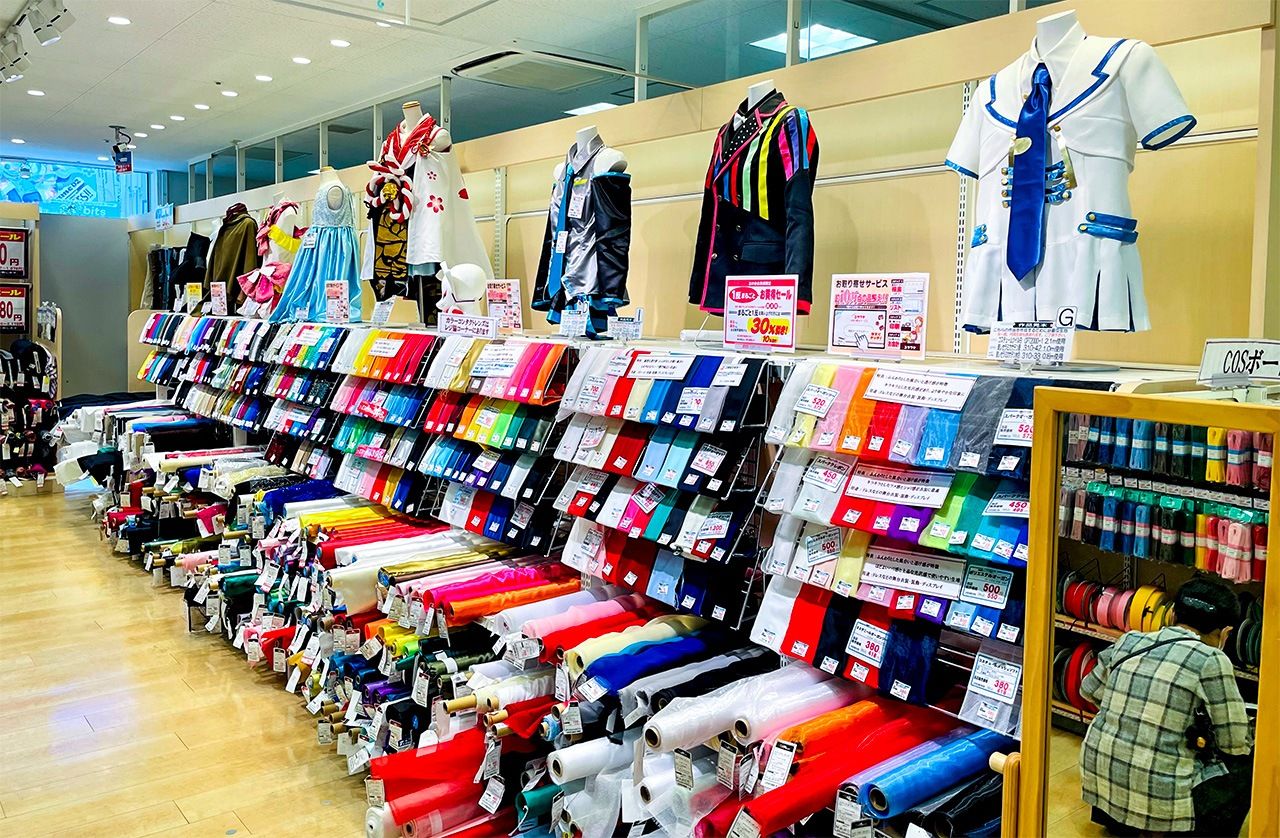
Costumes for a variety of characters are displayed with fabric along with other goods needed to create a wide range of accessories. (© Hanioka Yuri)
The Development of Otome Road
The area near the east gate of Ikebukuro Station has transformed into an “otaku town,” the genesis of which is without a doubt Otome Road.
The street is at the foot of Sunshine 60, a mixed-use high-rise boasting such attractions as a Pocket Monster center, a planetarium, and an aquarium. Other shops along the street include specialty stores featuring fanzines, anime merchandise, and cosplay costumes and wigs, as well as cafes with waiting staff dressed as butlers. During the 1980s this area was home to a few scattered anime shops, but by the 2000s it had blossomed into a center of “otome culture” as Animate stocked their shelves with more and more goods aimed at female otaku.
Animate Ikebukuro is a veritable otaku department store with merchandise related to the latest popular anime and manga. Otome Road, on the other hand, is known among the more enthusiastic fans as an “otaku jungle” for the array of goods to be found, including hard-to-get items. Here, otaku can spend hours scouring store shelves, hunting to their heart’s content for rare treasures.
One of the stores along the street that caters to female otaku is K-Books, a specialty retailer that divides its offerings into 14 different categories that are available at its different outlets clustered in the area. The Cosplay-Kan, for instance, offers over 5,000 items ranging from costumes to a wide variety of gadgets in the shape of popular anime and manga characters.
The chain’s Dōjin-Kan is the largest dōjin fanzine shop in Japan with more than 200,000 items, ranging from the latest anime and manga to classic works. New areas include the Cast-Kan featuring buromaido, pseudo-3D images of actors, and the Video-Kan with goods related to YouTubers and professional gamers. By constantly changing and creating new sections in its store, K-Books manages to stay on top of the latest trends.
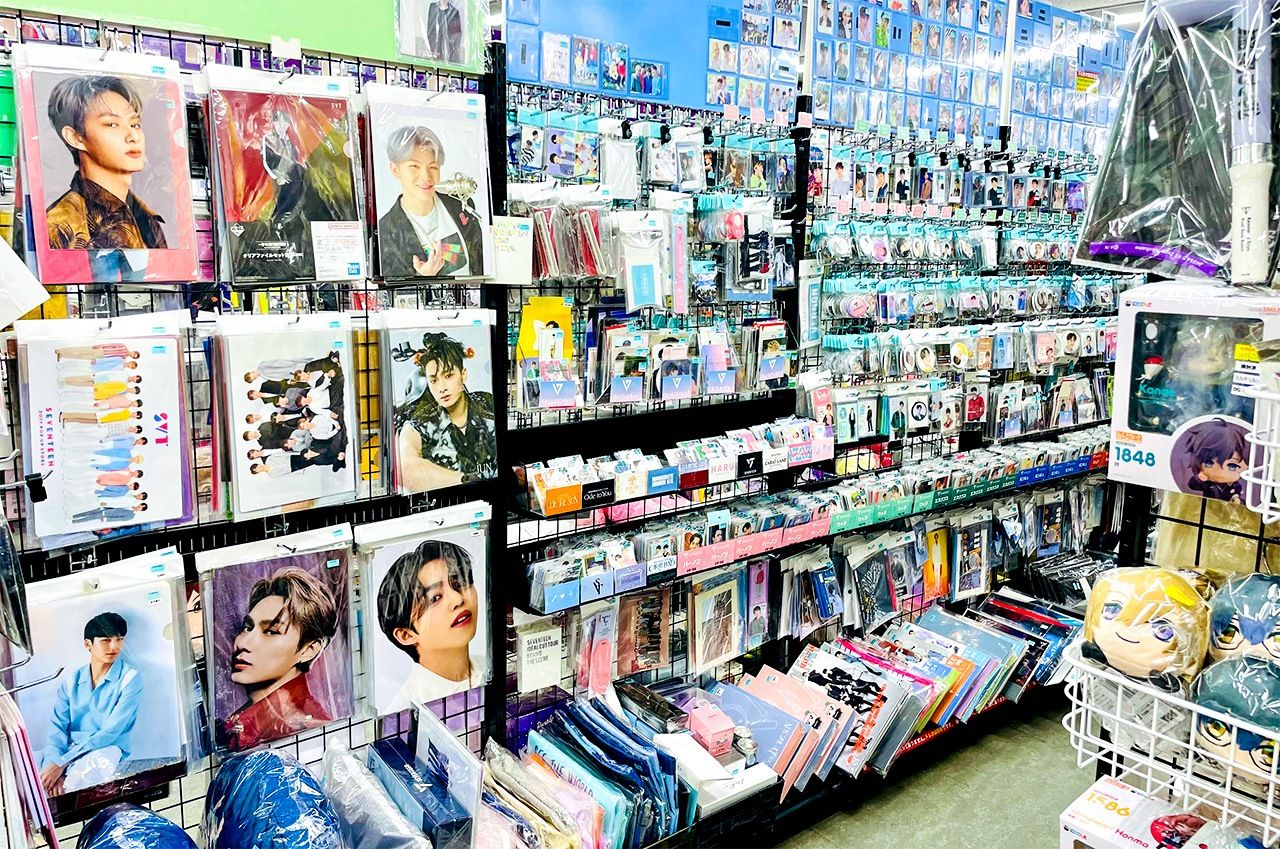
The K-Pop-Kan at K-Books is stocked with every conceivable item related to Korean pop culture idols. Fans throng the aisles of the store every weekend shortly after opening. (© Hanioka Yuri)
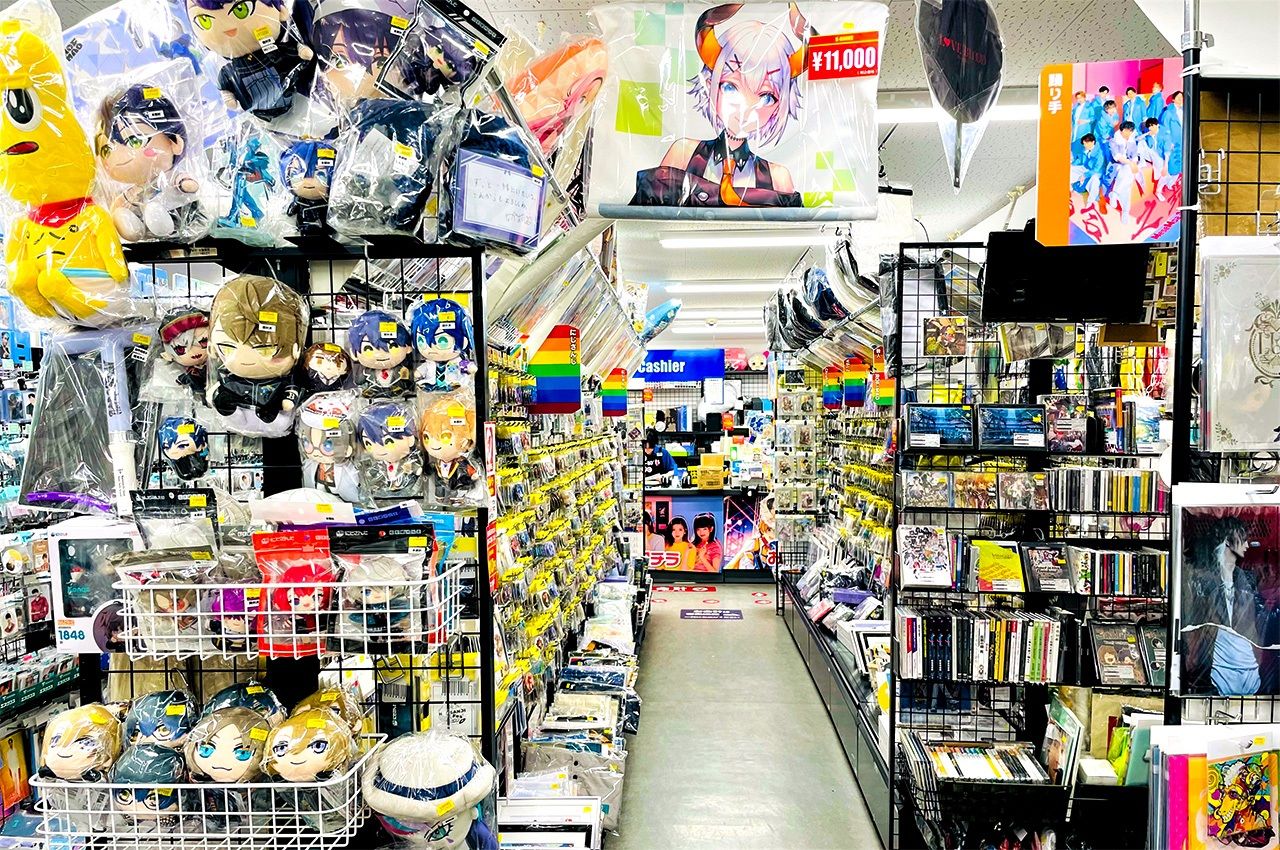
The Video corner within the K-Pop-Kan has a wide variety of merchandise related to video content creators like YouTubers, VTubers, singers, and dancers. (© Hanioka Yuri)
On the day I visited Otome Road, the cosplay event Acosta was in full swing at Sunshine Square and Higashiikebukuro Central Park. The event drew a broad selection of fans, including girls who looked to be of kindergarten age. There were people dressed as the character Anya Forger from the manga Spy x Family milling around the park, a group of men dressed as Hatsune Miku chatting, and a group of three people in the fluttering costumes of the Chinese BL anime Miyabi were striking poses for a photographer. Everyone at the event seemed to be living in their own fantasy world.
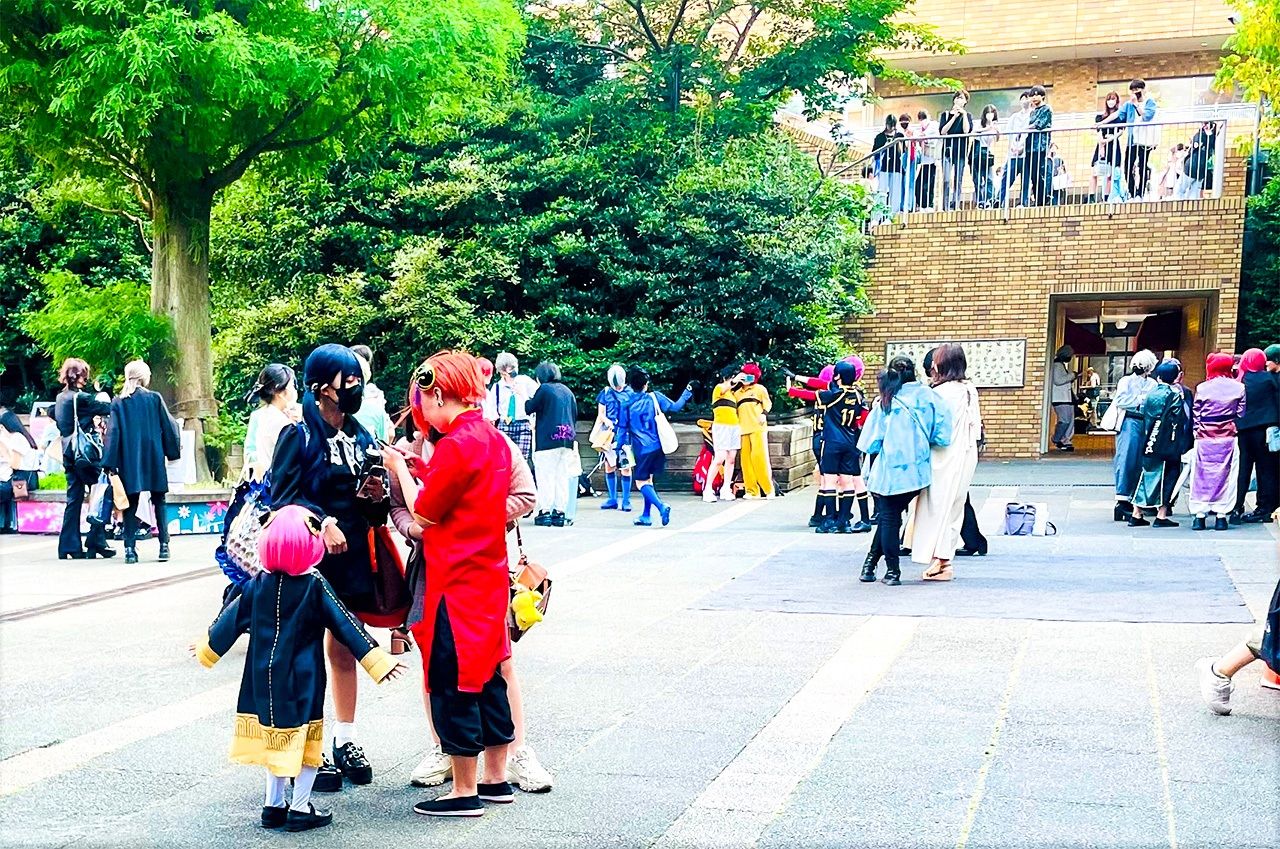
Scenes of a cosplay event held in Higashiikebukuro Central Park. Attendees outdid one another with the authenticity of their costumes. (© Hanioka Yuri)
Cosplayers sometimes go to great lengths to recreate their favorite character, including making customized costume teeth, wearing silicon breast implants, or even taping their chests to make them appear smaller. Gyms providing training programs tailored to help customers look like the character of their choice had their start in Ikebukuro.
Since the 1980s, female otaku have turned Otome Road into a space where they can freely and proudly flaunt the fandom of their choice.
Blurring the Difference Between Pretend and the Real World
A friend, a female gamer who frequents Ikebukuro, suggested I go to Cafe Cinnamon near the east gate of Ikebukuro Station. Opened in 2021, it features a stylish facade that masks its identity as on otaku oasis.
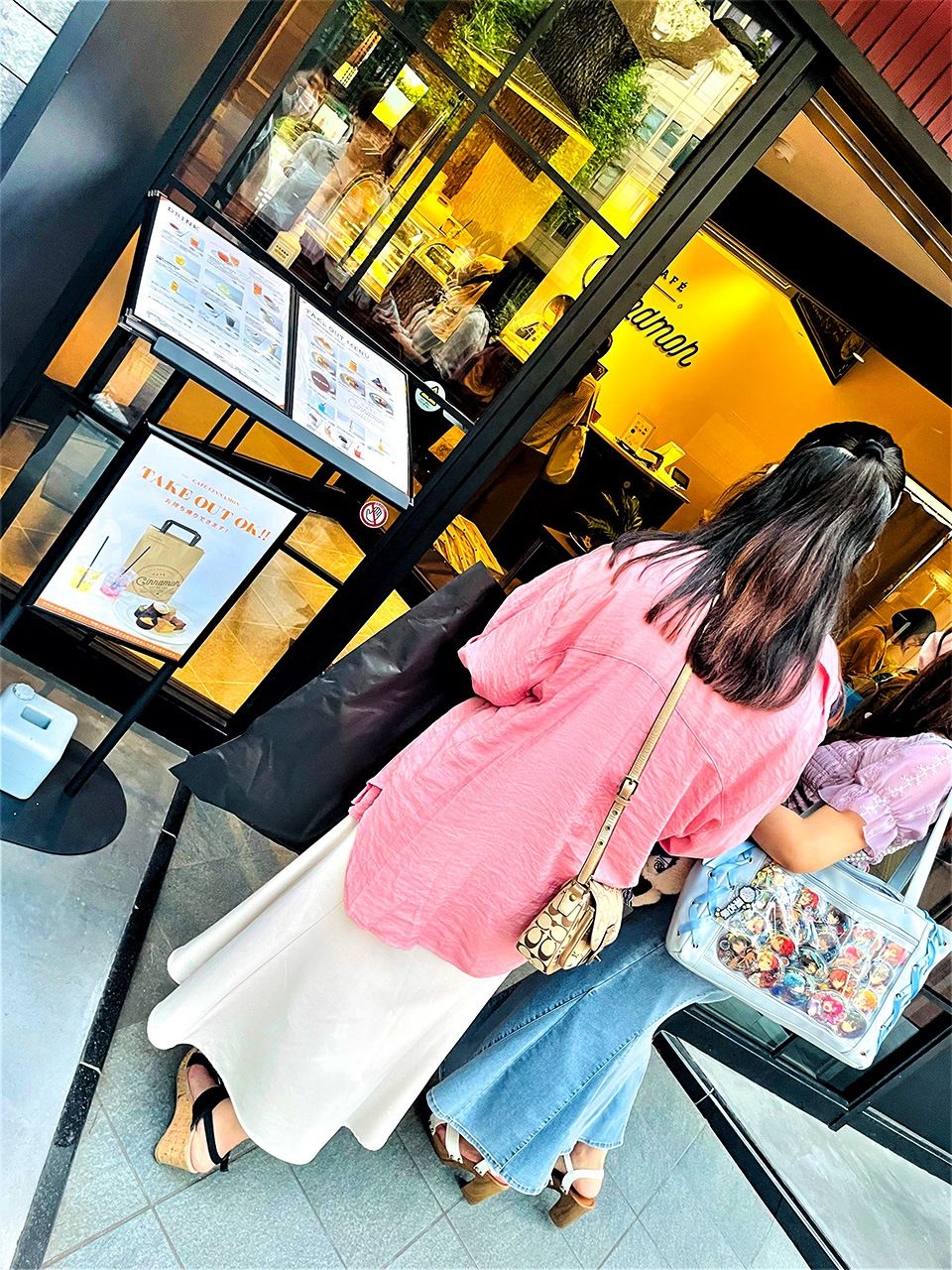
Cafe Cinnamon looks like any other fashionable café, but its clientele consists mainly of female otaku, as indicated by women sporting ita-bags at the entrance. (© Hanioka Yuri)
Seating is by reservation only and the clientele is strictly otaku. Waiting staff are dressed as characters from Ensemble Stars, a game franchise boasting more than 10 million downloads.
Everything in the cafe—from the layout and look of the interior to the staff uniforms and the menu—are modeled after the namesake cafe that appears in the game. Customers can fully immerse themselves in the world of the game, relaxing on the same sofa that characters lounge on and ordering the same drinks.
Otaku want to enter the manga, anime, and games they love, experiencing the worlds they depict with all their senses. As female fans increasingly seek out ways to recreate these fantasy realms, Ikebukuro is gradually transforming from a place that is friendly to otaku to a place that is exclusively for otaku.
(Originally published in Japanese. Banner photo: The K-Pop Video-Kan of K-Books features merchandise related to virtual idols. Most popular among primary and middle school students, many of them come to the store with their mothers. © Hanioka Yuri.)